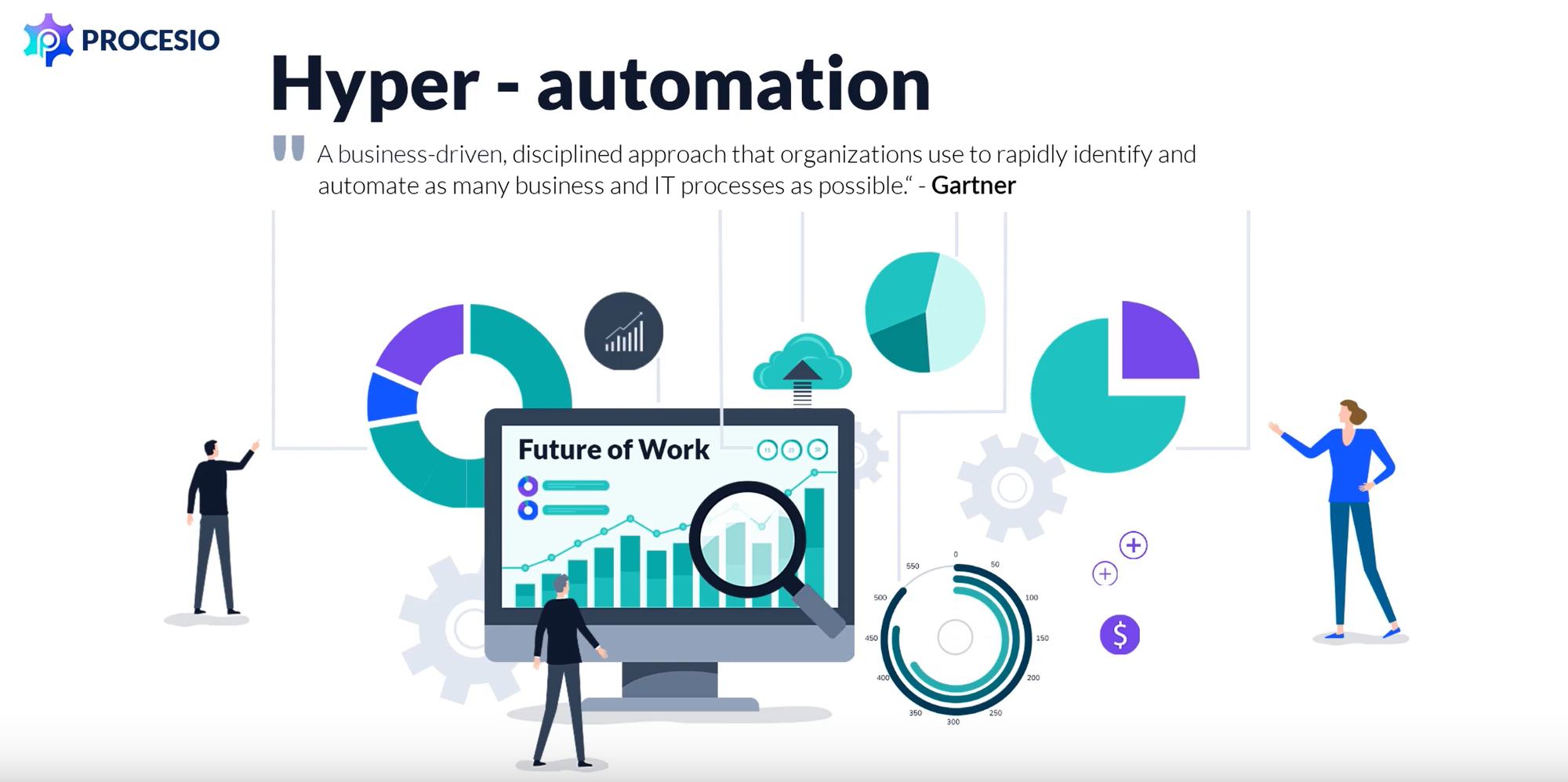The future of work is a hot topic these days.
Corporations and consulting companies worldwide conducted research and published reports on the subject, trying to help the organizations and the workforce prepare for the future.
One of the most critical factors that everybody agrees on is automation.
Gartner even coined the term "Hyperautomation" and defined it as a business-driven, disciplined approach that organizations use to rapidly identify and automate as many business and IT processes as possible."
Now, workflow and process automation is not something new. Doing something faster, better, and cheaper is what businesses strive for since… well, always 😊
What will change from our perspective is how the work is done and who does the work.
Let's see why and how!
In the last decades, workflow automation had three parties involved: business, business operations and software development.
The business works with business operations to define processes, data flows and metrics and decide what applications to use to support those.
The business operations works with software developers to customize and deploy the application.
Then, the lengthy integration process of the new application with the existing ones starts.
Anyone that has been involved in such a process knows that deploying the new application is the easy part. The integration with the organization's other applications and the automation is what takes a lot of time and money. And because of all these constraints, it often doesn't happen. It is not because people don't like automation but because it is costly and depends on software developers' availability. This is why 'business operations' does so much manual work to enhance the data available throughout the systems and create reports. This is why Excel is still the king 😉.
On top of being slow and expensive, the described automation process also reduces business agility.
No organization that finished an integration and automation project wants to start over. They want that effort to pay off. But we all know that change is the only constant, and the pace of change increases. So, to stay competitive, organizations need to be able to change and add fast new applications in their toolbox and, at the same time, keep the level of automation.
To achieve this, organizations need to change how 'business operations' work.
Using PROCESIO, a no-code/low-code integration and automation platform, the business operations no longer need to depend on software developers. They can do most of the integration and automation work by themselves. Any business operations professional who knows how to use Excel can learn to use PROCESIO and start integrating applications and automating processes in a matter of hours.
The successful organizations of tomorrow will be the ones that transform their integration and automation processes, shifting from being developer-centric to business operations centric.
If you want to learn more, visit Procesio website.
